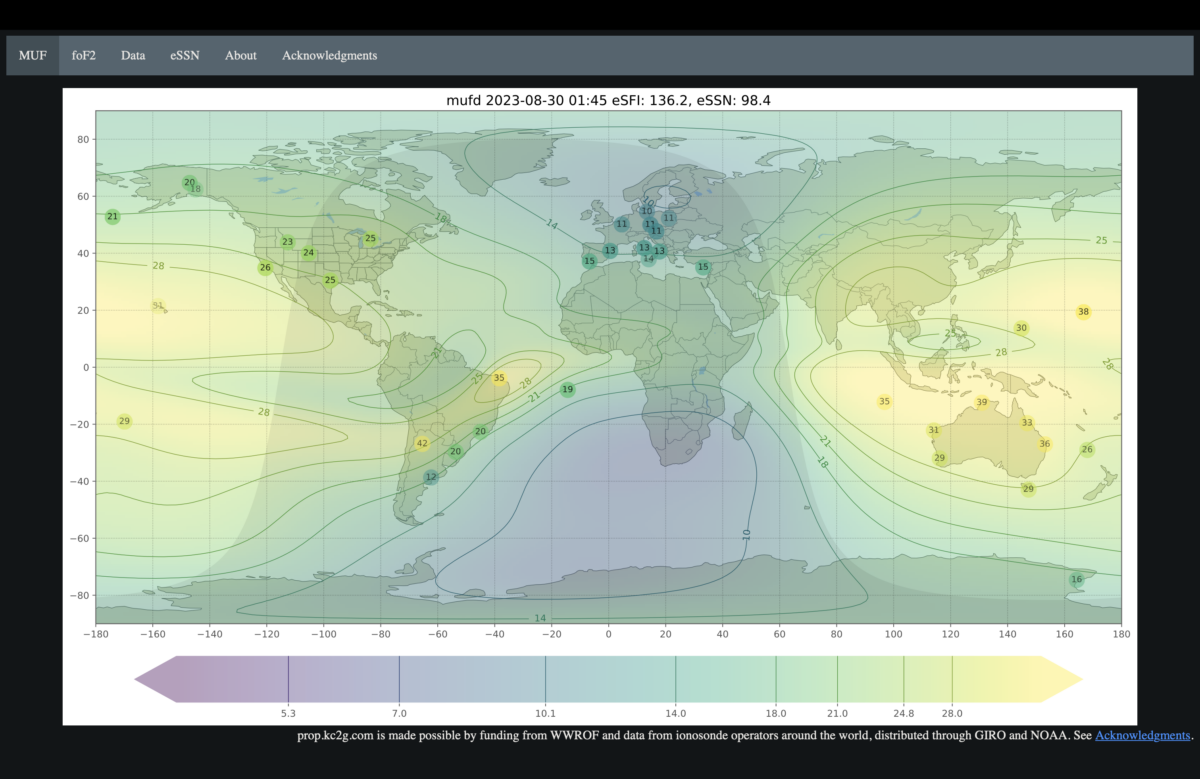I often come across radio amateurs generalizing the whims of, “the bands,” as if they were some enigmatic ethereal thing that couldn’t possibly be understood or probed. This is utter poppycock! You can use realtime space weather data to help you make informed decisions as to where you will most likely be able to communicate to and on which band at any given time without even turning on your radio.
Requisite Links
There are four websites we can look at to determine all of what we need to know:
NOAA Space Weather Prediction Center
Bonus:
Space Weather Woman – Dr. Tamitha Skov
Read these first!
Solar Activity & HF Propagation – NA5N
NOAA SWPC Space Weather Scales
Foundations Recap:
Hp30
Hp30 is very similar to the Kp index although it gives us a 30 minute window instead of a smoothed 3 hour forecast. This metric is a measure of geomagnetic activity and a reflection of noise on mainly the low bands (40-160m) except in extreme cases and will be indicated by NOAA SWPC using their space weather scales when it is likely to affect 30m and above.
MUF (3000KM) – Maximum Usable Frequency
You must calculate the FOT for the lowest MUF between two points as indicated on the KC2G MUF map. This gives us an idea of which band we should be operating on to communicate with a specific destination.
FOT – Frequency of Optimum Transmission
FOT is simply put, MUF*0.85. The band nearest to the result of the calculation is the band we should target to get from A to B. When in doubt, go lower in frequency.
f0F2 – Critical Frequency
This indicates when NVIS bands (160-30m) go short or long. When the critical frequency is higher than the frequency range for a given band, the band has gone “short” and local contacts can be made using high incident angle transmissions.
eSFI – Effective Solar Flux Index
Radio amateurs use the solar flux index as a way to infer F2 layer ionization. When the SFI rises above 150, HF conditions begin to shine. Sustained SFI greater than 150 over several days is typically what we are looking for although I’ve personally noticed even brief windows >150 can bring good DX conditions for weak signal digital modes like FT8 and JS8.
Solar Flares
Only a bad thing in extreme cases! If we time our operation properly we can use the boost in F2 ionization to great effect as noted by NA5N.
Putting It All Together:
Good High Band DX (10-20m) Conditions
- eSFI >= 150
- G < 2
- R = 0
Good Low Band DX (30-160m) Conditions
- Hp30 < 1
- G < 2
- R = 0
Good NVIS (30-160m) Conditions
- Hp30 < 1
- f0F2 > NVIS Band Frequency
- Additionally try a FOT calculation on f0F2 (0.85*f0F2) to account for error and ionospheric fluctuation. It’s essentially a derating factor.
- G < 2
- R = 0
- During the day, 160-80m is greatly attenuated by D-layer absorption but in the late afternoon it’s often more stable for short range NVIS. NOAA D-RAP
Notes:
Here are some less than scientific observations I have made that may aid you in judging fringe conditions. I will update this log as I make observations.
- When the eSFI is lower than 150 but the MUF map shows a high band DX path…
- The best thing you can do here is probe the ionosphere using a weak signal digital mode and PSKReporter. Much of the time when I see this, the F2 ionization is not stable or the area of ionization is very limited. You’ll have to be opportunistic about it.
- For (0-50mi) NVIS on 40m, f0F2 needs to be >=8.5MHz or that region becomes a skip zone. If the day is on the downward slope, this is the point at which to switch to 80m.
- Good NVIS is not just a low dipole. If you’d like to reliably hit a certain area, you should do some trig and optimize the antenna radiation pattern so that the main lobe covers that takeoff angle. Additionally, new-ish data suggests optimum NVIS height for horizontal dipoles is 0.18–0.22λ for TX and 0.16λ for RX.
